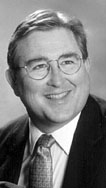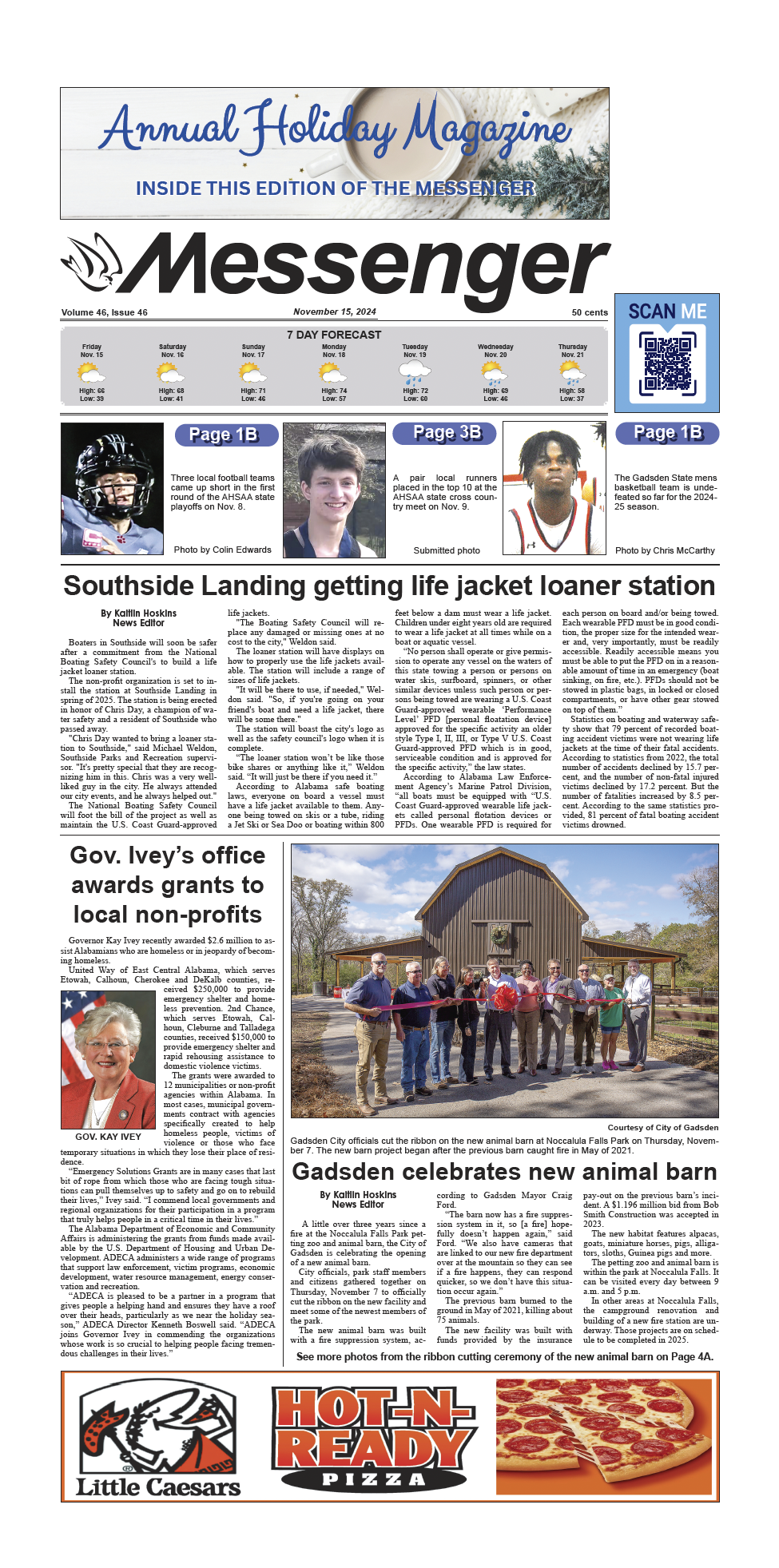Of the daring young men in their flying Jennies, who barnstormed the country half a century ago, the first to skyrocket to fame was Omer Locklear of Texas. His pilot and best buddy was Milton “Skeets” Elliott of Gadsden.
Lock and Skeets were the names used by headline writers of the day and every newspaper reader knew who was meant. Add the Babe and you have the three best-known nicknames of the era.
Lock and Skeets were the stuff legends are made of. They walked the wings of their Jenny (a Curtiss plane) at 5,000 feet above the ground.
They changed from one plane to another in mid-air. They performed acrobatics dangling from planes in motion.
Later they were to have their imitators, and some very good ones, but for a year or so following World War I they were to stunt-flying what Charlie Chaplin was to comedy. Defying death was their business.
Skeets could stunt too. But he was a whiz at the controls. As pilot, he could feel to the marrow of his bones where his plane was supposed to be, to the fraction of an inch, to the fraction of a second.
When Lock climbed from the cockpit and over the wing of the overhead plane, there was Elliott in the precise spot below to make his jump a sure thing.
In fact, they made the stunt look so simple that their agent, William H. Pickens, a hardboiled Alabama redhead, was unhappy about it. When you defy death, you ought to look as if you are defying death.
Elliott and Locklear met while in training for the Air Force in World War I. After the war they met again, and because of their talents dovetailed so perfectly, they became the most famous barnstorming team on the circuit.
In Bessemer they attracted the biggest crowd ever assembled in Alabama up to that time.
Inevitably they went to Hollywood. Why not? Weren’t they the hottest thing in show business?
In no time at all the young aviators were going to Thursday night dances at the old Hollywood Hotel, on a first name basis with Mary Pickford, Buster Keaton, Colleen Moore, Richard Barthelmess, Richard Arlen.
Lock was soon aviation adviser to Cecil B. DeMille, who not only learned to fly but built two airports to make it more convenient.
Lock also found himself in love with Viola Dana, one of Hollywood’s prettiest young stars.
His conscience gnawed since he was still married to an attractive young woman who stayed in Fort Worth because her husband’s stunts understandably left her unnerved.
As it happened, Lock never had to make a decision to end this triangle. There was not much time left.
As we follow the career of Locklear he becomes a stunt-flying movie star in The Skywayman with Louise Lovely and note the wane of his daredevil impulses as his love for Viola deepens.
Elliott is less famous but his contemporaries and members of his family have not forgotten that he was the son of Captain Jim and Nina Kyle Elliott.
He grew up in the enormous Victorian mansion which, surrounded by acres of yard, stood on the present site of today’s court house.
He went to the University of Alabama, where he was a member of Sigma Alpha Epsilon, and later studied at Columbia
Mrs. Elliott deplored her son’s occupation. She said sadly, “I know Milton will be killed some day. It’s only a question of time.
‘He does not have to fly for a living, but he is charmed by the life and its associations. I cannot induce him to remain at home”.
On the night of Aug. 2, 1920 half the movie colony gathered in holiday mood to watch the spectacular stunts which would provide the climax for The Skywayman, a movie Lock and Skeets would never see. The performance was brilliant, the crowd horrified as the plane spiraled downward.
The next day there were editorials, and then funerals back home in Fort Worth and Gadsden. Most poignant though, are the words of the young flyers as they climbed into their plane that night.
“Somehow or other, I’ve a hunch I ought not to fly tonight” said Lock…”
“Come on, old-timer” said Skeets. “it’s too late in life for you to be getting old-maid ideas.”
Lock was 29. Skeets was 30.
When Skeets Elliott of Gadsden and Ormer Locklear of Fort Worth crashed to their death, editors all over the country were quick to speak of the tragic waste and the senseless sacrifice of the lives of America’s most dazzling young aviators.
Skeets’ father was a famous riverboat captain and his mother as a toddler rode horsie on General Forrest’s boot. He was brought up in style and elegance in the mansion on Forrest Avenue.
Tragically, the death of the young men certainly was a sacrifice. But it was not a waste.
It is not that they made any notable contribution to science, as their agent tried to pretend.
What they did was to make America air-minded. When Skeets and Lock began to fly, most Americans were still saying that if God intended us to fly, he would have given us wings.
Even the word airplane was not yet in use. We spoke of flying machines, aeroplanes or airships and sensible people stayed out of them.
But during those barnstorming days following World War I, there was no way to keep Skeets and Lock from putting on a free show.
True, tens of thousands paid admission to see them as they performed at state fairs – but children on school grounds, farmers in the fields, pedestrians on city streets, looked heavenward and saw them for nothing.
They saw long, lovely loops, more graceful than anything achieved by Jonathan Livingston Seagull.
They saw breath-taking downward spirals, called tailspins, which Skeets pulled out of with incredible ease at the very last moment.
If they were lucky, they saw Lock walk along the wings of the plane, casually. Flying, they decided, was not man’s enemy. It was man’s future. They convinced Americans that planes are for peace as well as war.
They paved the way for Lindbergh. For Neil Armstrong.
They followed a path which has led aviation from Kitty Hawk to today. That would have pleased Lock.
Numbers of the Elliott-Locklear generation are among aviation’s immortals.
None have a surer place than Skeets and Lock.
To our newsletter




